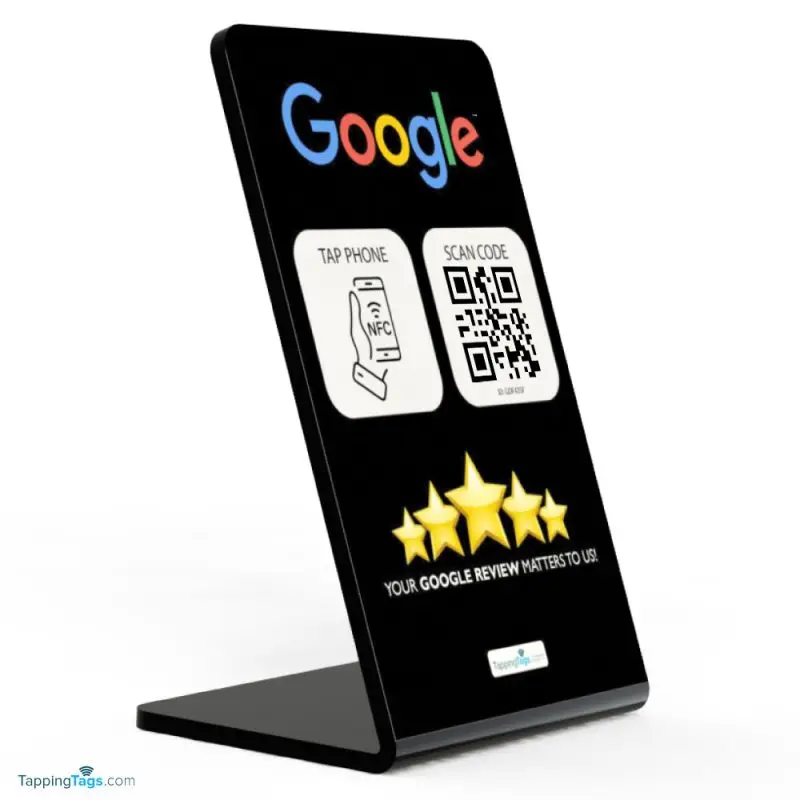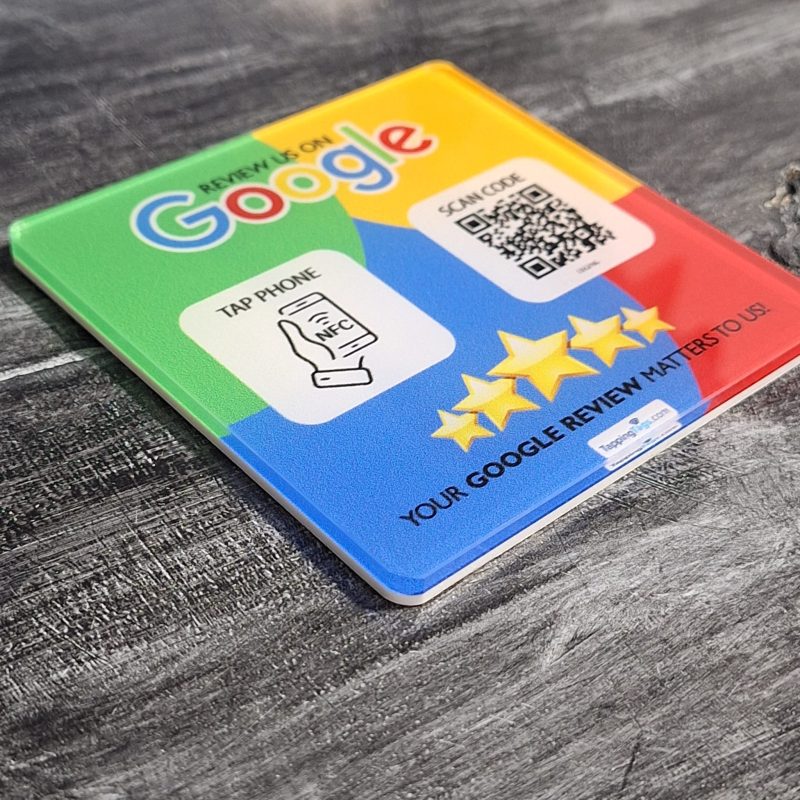Blog
The Psychology Behind Leaving a Google Review
Ever wondered why people take the time to leave a Google review? Whether it’s a glowing five-star shoutout or a scathing one-star rant, there’s a fascinating psychology behind it. In this deep dive, we’ll explore the Psychology of Google Reviews, how businesses can leverage this behavior, and how innovative tools like Tapping Tags’ Google Review NFC card are revolutionizing the way we collect and respond to customer feedback.
1. Psychology of Google Reviews: Why People Share Their Opinions
Humans are social creatures. We love to share our experiences—good or bad. The Psychology of Google Reviews is rooted in our desire to connect, influence, and be heard. When someone leaves a review, they’re not just rating a product or service—they’re expressing identity, values, and emotions.
- Validation: People want to feel their opinions matter.
- Altruism: Helping others make informed decisions.
- Reciprocity: Giving back to businesses that treated them well.
According to social proof theory, we’re more likely to trust a business if others have vouched for it. That’s why reviews are so powerful—they’re digital word-of-mouth.
2. Emotional Triggers Behind Leaving a Review
Emotions play a massive role in the review process. A customer who’s thrilled with your service might feel compelled to share their joy. On the flip side, a negative experience can trigger frustration or anger, prompting a critical review.
These emotional triggers include:
- Joy: “This place made my day!”
- Anger: “I need to warn others!”
- Gratitude: “They went above and beyond.”
Understanding these emotions helps businesses respond empathetically and improve the customer journey.
3. The Role of Instant Gratification in Review Behavior
We live in a world of instant likes, shares, and feedback. Leaving a review offers a quick dopamine hit—especially when others find it helpful. This is where tools like the Google Review NFC card from Tapping Tags come into play. By simplifying the review process, they tap into our craving for instant action and reward.
4. Social Identity and the Reviewer’s Ego
Leaving a review is also about self-expression. People want to be seen as savvy consumers, foodies, or tech experts. Reviews become a platform to showcase knowledge and taste. This aligns with the Psychology of Google Reviews—it’s not just about the business, it’s about the reviewer’s identity.
5. The Influence of Peer Pressure and Herd Mentality
Ever noticed how a business with hundreds of reviews feels more trustworthy? That’s herd mentality at work. When people see others leaving reviews, they’re more likely to follow suit. It’s a psychological nudge that businesses can leverage by encouraging early adopters to leave feedback.
6. Tapping Tags, NFC Technology, Google Review NFC Card, Customer Feedback, Online Visibility, Review Process, Increased Engagement, Enhanced Online Presence, SEO Boost, Contactless Technology
Tapping Tags is changing the game in customer engagement. Their Google Review NFC card uses NFC technology to make leaving a review as easy as a tap. This contactless technology streamlines the review process, leading to increased engagement and an enhanced online presence.
Here’s how it works:
| Feature | Benefit |
|---|---|
| Contactless Tap | Instant access to review page |
| Custom Branding | Boosts brand recognition |
| Real-Time Feedback | Improves customer service |
By integrating this tool, businesses can enjoy an SEO boost and improved online visibility. Learn more on their About page.
7. The Power of Reciprocity in Customer Feedback
When customers feel valued, they’re more likely to reciprocate with a review. A simple “thank you” or a loyalty perk can go a long way. Tapping Tags makes it easy to ask for feedback at the right moment—when the customer is most satisfied.
8. How Ease of Use Affects Review Rates
Let’s face it—people are lazy. If leaving a review takes more than a few clicks, most won’t bother. That’s why the Google Review NFC card is genius. One tap, and boom—you’re on the review page. No QR codes, no typing URLs. Just tap and go.
9. Trust and Transparency: Building Review Credibility
Consumers trust reviews when they feel authentic. That means no fake reviews, no bots, and no shady tactics. Businesses that respond to reviews—good or bad—build trust and show transparency. This is a cornerstone of the Psychology of Google Reviews.
10. Timing Is Everything: When to Ask for a Review
Catch customers at the peak of satisfaction. That’s the golden window for asking for a review. Whether it’s right after a meal, a haircut, or a successful service call, timing can make or break your review strategy. Tapping Tags helps you strike while the iron’s hot.
11. The Role of Incentives in Motivating Reviews
While Google frowns upon incentivized reviews, there are ethical ways to encourage feedback. Think loyalty points, thank-you emails, or exclusive content. Just don’t offer cash or discounts in exchange for positive reviews—it’s a slippery slope.
12. Negative Reviews: A Blessing in Disguise?
Believe it or not, a few negative reviews can actually help. They add authenticity and give you a chance to show off your customer service skills. Responding professionally to criticism can turn a hater into a fan—and boost your credibility.
13. The Halo Effect in Review Psychology
One great review can create a halo effect, influencing how others perceive your business. It’s like a snowball—momentum builds, and suddenly you’re the talk of the town. That’s why every review counts.
14. How Reviews Impact Buying Decisions
According to BrightLocal, 87% of consumers read online reviews before making a purchase. That’s huge. Reviews aren’t just feedback—they’re sales tools. The better your reviews, the more likely people are to choose you over the competition.
15. Mobile Behavior and the Rise of Contactless Technology
We’re glued to our phones. That’s why mobile-friendly review tools like Tapping Tags’ Google Review NFC card are so effective. They meet customers where they are—on their smartphones—and make it ridiculously easy to leave feedback.
16. The Psychology of Star Ratings
Stars aren’t just pretty—they’re powerful. A difference of just 0.5 stars can sway a customer’s decision. People often scan ratings before reading reviews, so maintaining a high average is crucial.
17. The Impact of Review Volume on SEO
More reviews = more keywords = better SEO. It’s that simple. Google loves fresh, user-generated content. The more reviews you have, the more visible you become. That’s an SEO boost you can’t ignore.
18. Local SEO and Google Reviews
For local businesses, reviews are gold. They influence your ranking in the “Local Pack” on Google Maps. Tapping Tags helps you collect more reviews, faster—giving you a leg up in local search results.
19. Review Fatigue: Why Some Customers Don’t Bother
Some folks are just tired of being asked for reviews. The key is to make it effortless and meaningful. That’s where Tapping Tags shines—no forms, no friction, just a tap.
20. The Psychology of Negative Bias
People are more likely to leave a review after a bad experience. It’s called negativity bias. To counter this, businesses must actively encourage happy customers to share their stories too.
21. How Personalization Increases Review Rates
“Hey Sarah, we’d love your feedback!” feels way better than “Please leave a review.” Personalization makes customers feel seen and valued. Combine this with Tapping Tags’ tech, and you’ve got a winning combo.
22. The Role of Visuals in Review Engagement
Photos and videos make reviews more engaging. Encourage customers to upload images—it adds authenticity and boosts trust. Plus, it makes your business look more appealing in search results.
23. Responding to Reviews: The Secret Sauce
Don’t just collect reviews—engage with them. Thank customers for positive feedback and address concerns in negative ones. It shows you care and builds loyalty.
24. How Reviews Influence Brand Perception
Your reviews are your reputation. They shape how people perceive your brand. A strong review profile can elevate you from “just another business” to a trusted authority.
25. Future Trends in Review Technology
AI, voice search, and NFC are changing the game. Tapping Tags is at the forefront, blending contactless technology with smart design to make reviews easier than ever. The future is frictionless—and it’s already here.
FAQs
1. What is the Psychology of Google Reviews?
It refers to the mental and emotional factors that drive people to leave reviews—like validation, social identity, and emotional triggers.
2. How do Google reviews affect SEO?
They provide fresh, keyword-rich content that boosts your search rankings and online visibility.
3. What is a Google Review NFC card?
It’s a contactless card from Tapping Tags that lets customers leave a review with a simple tap using NFC technology.
4. How can I get more Google reviews?
Ask at the right time, make it easy with tools like Tapping Tags, and personalize your request.
5. Are negative reviews bad for business?
Not necessarily. They add authenticity and give you a chance to show excellent customer service.
6. Is it ethical to incentivize reviews?
Yes, as long as you don’t offer rewards in exchange for positive reviews. Focus on appreciation, not bribery.
Conclusion: Turning Psychology into Strategy
The Psychology of Google Reviews isn’t just fascinating—it’s actionable. By understanding what drives people to leave reviews, businesses can craft smarter strategies, build trust, and boost visibility. And with tools like the Google Review NFC card from Tapping Tags, collecting feedback has never been easier—or more effective.
So, are you ready to tap into the power of psychology and technology? Because your next review could be just a tap away.
-
 Google Review NFC and QR Code Acrylic Stand
Rated 5.00 out of 5
Google Review NFC and QR Code Acrylic Stand
Rated 5.00 out of 5$75.00Original price was: $75.00.$38.50Current price is: $38.50. -
 Google Review NFC & QR Code Acrylic Tag with Sticker
Rated 5.00 out of 5
Google Review NFC & QR Code Acrylic Tag with Sticker
Rated 5.00 out of 5$49.00Original price was: $49.00.$27.00Current price is: $27.00. -
 Google Review NFC and QR Code Card - Tap or Scan
Rated 5.00 out of 5$18.90 – $98.90Price range: $18.90 through $98.90
Google Review NFC and QR Code Card - Tap or Scan
Rated 5.00 out of 5$18.90 – $98.90Price range: $18.90 through $98.90
